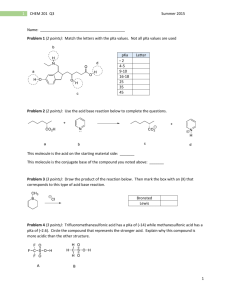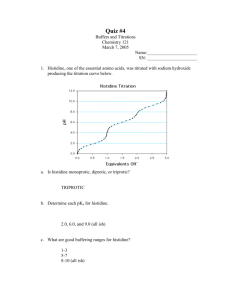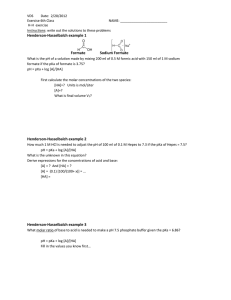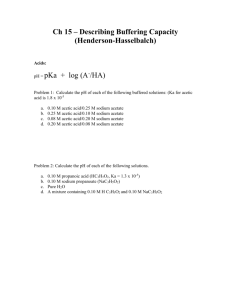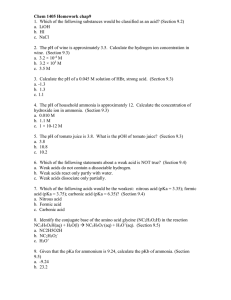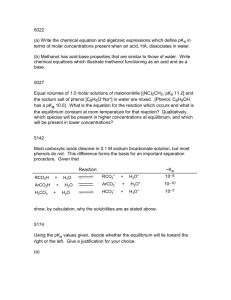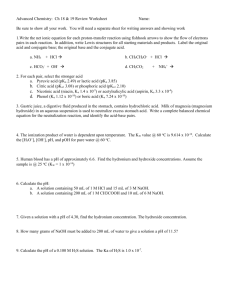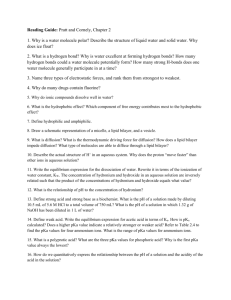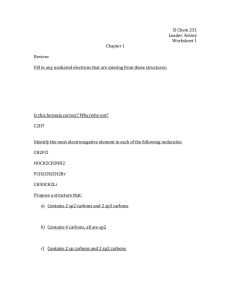HERE - Oregon State University
advertisement
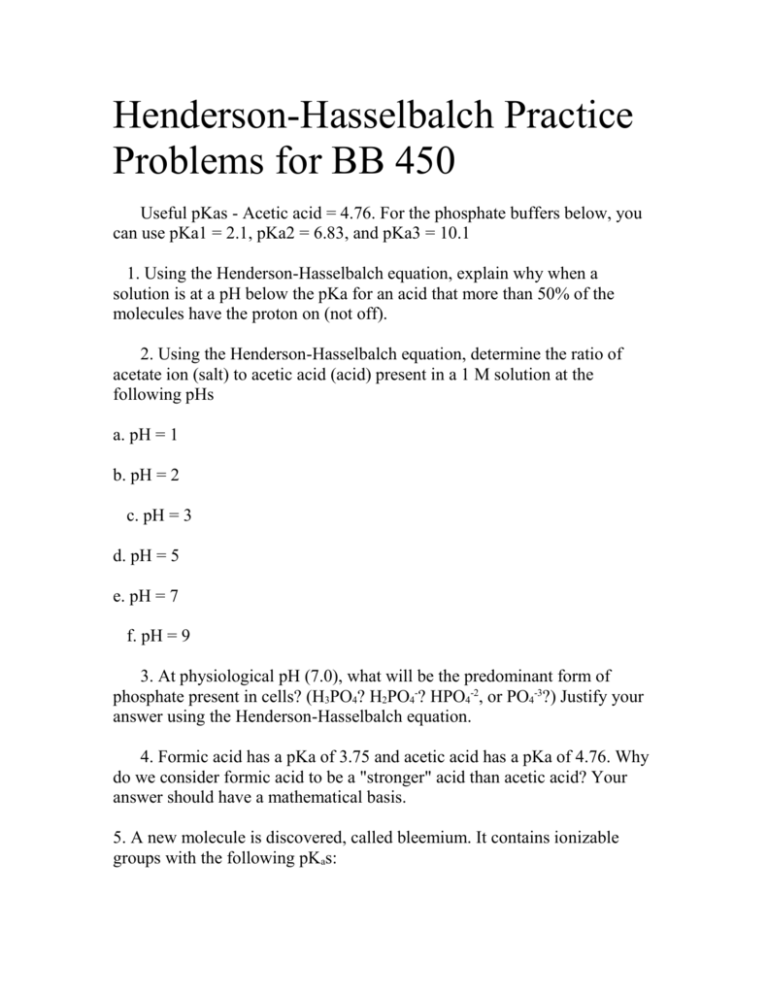
Henderson-Hasselbalch Practice Problems for BB 450 Useful pKas - Acetic acid = 4.76. For the phosphate buffers below, you can use pKa1 = 2.1, pKa2 = 6.83, and pKa3 = 10.1 1. Using the Henderson-Hasselbalch equation, explain why when a solution is at a pH below the pKa for an acid that more than 50% of the molecules have the proton on (not off). 2. Using the Henderson-Hasselbalch equation, determine the ratio of acetate ion (salt) to acetic acid (acid) present in a 1 M solution at the following pHs a. pH = 1 b. pH = 2 c. pH = 3 d. pH = 5 e. pH = 7 f. pH = 9 3. At physiological pH (7.0), what will be the predominant form of phosphate present in cells? (H3PO4? H2PO4-? HPO4-2, or PO4-3?) Justify your answer using the Henderson-Hasselbalch equation. 4. Formic acid has a pKa of 3.75 and acetic acid has a pKa of 4.76. Why do we consider formic acid to be a "stronger" acid than acetic acid? Your answer should have a mathematical basis. 5. A new molecule is discovered, called bleemium. It contains ionizable groups with the following pKas: Carboxyl #1 pKa = 2.2 Carboxyl #2 pKa = 4.4 Amine #1 pKa = 5.0 Amine #2 pKa = 8.5 Amine #3 pKa = 9.5 Predict the charge on bleemium at the following pHs: 1.0 7.0 11.0 6. One liter of 1M acetate buffer at pH = 4.5 is mixed with 600 ml of .5M acetate buffer at pH = 4.8 and then one liter of HCl (0.1M) is added. What is the pH of the final solution?

